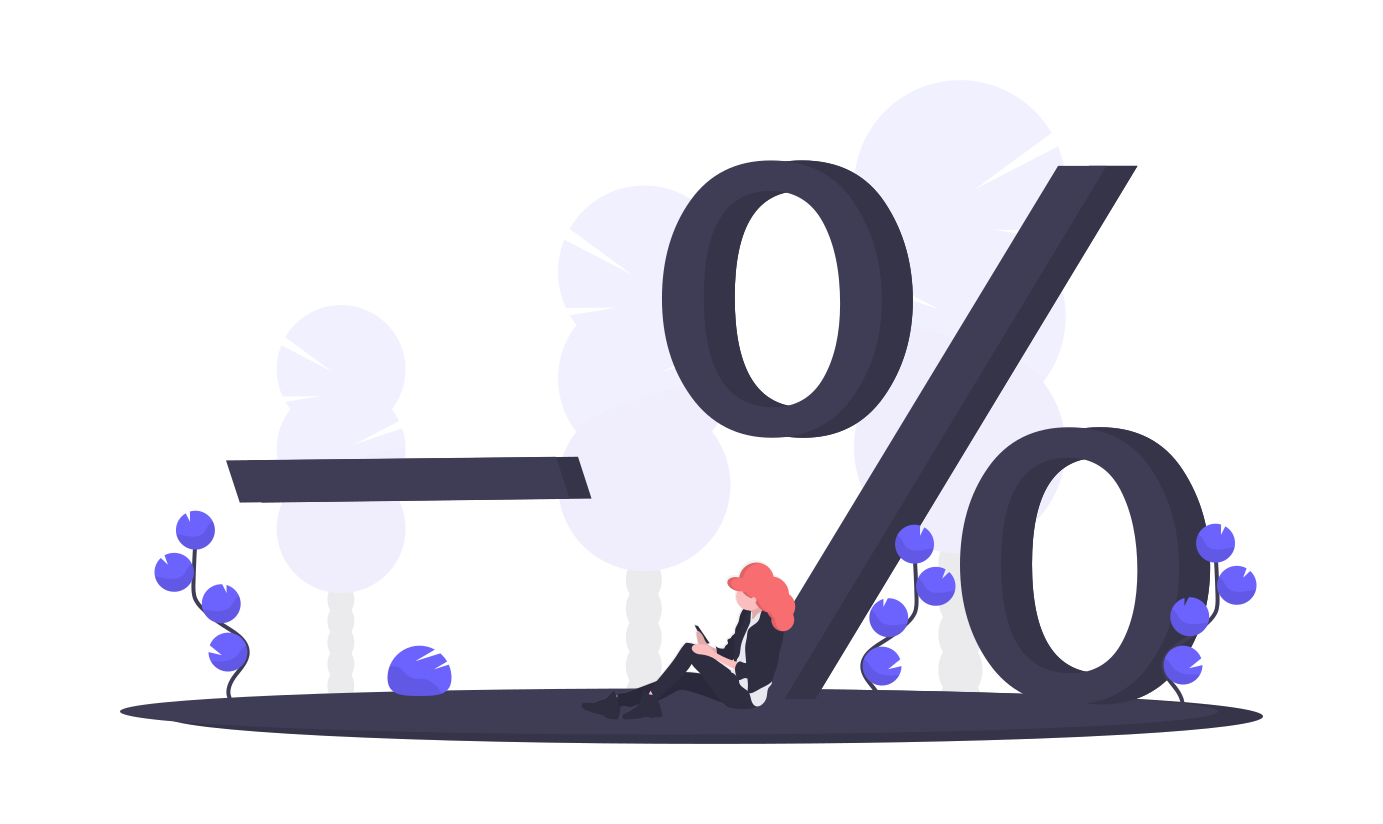So, a common question asked by new traders on any of Liquids funding and partner platforms is
“Why do I pay $$$ monthly for low or high leverage and split profits, when I can fund my own account at a broker and keep all the money I make?”
Interesting question right? And a smart one too. (See what I told you, this would be interesting?)
Okay let’s see if the BluLive platform has a smart response to this. But first, let’s take a look at the concept of leverage.
Leverage is a form of loan given to a trader by the broker to enable them trade with a higher capacity. Okay let’s paint a picture with this. Remember this is a case of “One time fee with high leverage or pay monthly with low leverage”. Lets continue with this picture…
A man has $400 with which he intends to trade currencies in the financial markets. But you see, currencies are traded in units called lot sizes and the least lot size you can trade of any currency is 1 lot, which is the equivalent of 100,000 units of that currency. This trader receives a hot tip from his Uncle who is the “guy who knows” in the family, telling him the Fed are going to lower interest rates, hence the Dollar would depreciate in value.
The Broker Option
This trader decides to buy the Euro, in the expectation that when the value of the dollar falls against other currencies, he would sell and make a profit. But to deal directly in the financial market, he needs to have the capacity to buy 100,000 Euros. Let’s assume the exchange rate for one Euro to Dollars is $1.13, he would need to have: 100,000 Euros x 1.13 = $113,000
This is where brokers come in. If he registers at a broker and is offered a leverage of 1:500, this means he can trade at a capacity that is 500 times the amount he deposits in a broker account.
For his $400, this means he can trade at: $400 X 500 = $200,000
Super cool right! Brokers are awesome!
So he takes the offer, and opens a buy trade of 1 lot on EURUSD, which is buying 100,000 Euros. A few days later, the Feds lower the interest rate, the dollar drops against other currencies (and his Uncle’s “Street Cred” is validated and possibly upgraded to “Legend”). Now the exchange rate of 1 Euro to Dollars rises to 1.15 after the announcement. The #100,000 Euros now has a
value of: 100,000 Euros x 1.15 = $115,000
He has therefore made a profit of: $115,000 – $113,000 = $2000
The trader closes this trade, thereby selling the Euro and buying back his Dollars. He’s made $2000 with just $400. Wow!
But hey, life happens you know. So let’s imagine an opposite scenario where the Feds leave rates the same and the dollar rises to 1.115 against the Euro. His 100,000 Euros is now valued at: 100,000 x 1.115 = $111,500
He just incurred a loss of: $130,000 – 111,500 = $1,500
Closing the trade at this point, this $1,500 would be deducted from his account. This then leaves him with a negative balance, meaning he owes the broker. $400 – $1,500 = -$1100
However, brokers are nice but they too are smart business men. In order to guarantee that our friend here does not lose more than his actual account balance, margin is used. The Margin is the amount set aside from the trader’s balance to ensure that the trade can stay open. In the case of this trader, considering his leverage, his margin would be $226 for this trade. So his trade is closed once his losses hit $174. This leaves him with a balance of $226.
(For more understanding on please consult our blog article on the subject Margin)
The BluLive Option
Now let’s consider this trader paying for the BluLive $40,000 account. He has an option of higher leverage with more responsibility for risk, or he can trade without any worries of blowing his account by having hi risk exposure regulated by statistical models.
Profit
He buys 1 lot size of Euros, the Dollar drops and he makes a profit of $2000. He then decides to withdraw his profits. Considering the 60/40 profit split, he gets to keep $1000. Deducting his initial fee of $326 paid, his total profit is: $1000- $326 = $674
He has still made a profit that is twice his initial fee. Good business right? BluLive rocks!
Loss
Remember that thing called Margin? Good. Now he incurs a loss as the exchange rate falls instead of rising. His Margin on this trade is $37,666. Meaning the trader can incur the loss of $2000 without being kicked out of the trade. This allows him “leave” to fight another day. He still has $48,000 as his account balance with which he can take more trades. You see! BluLive works!!
Trading Career Trajectories
Now we focus more on the individual trader and how trading with BluLive gives them an advantage over trading on their own.
The question of whether it’s better to leverage your 400 or pay it to BluLive as the monthly fee will depend on your expectation for your trading success.
We will now look at the 4 most common types of trader career trajectories. Simply put, your expectations for your trading career should fall broadly into 1 of these categories.
Trader Profiles
Trader A Profile
Let’s call this trader Adam. He Loses 100 pips at the beginning of his career, before eventually becoming profitable and making 500 pips.
Trader Adam (2)
Personal Account Option
Let’s say Adam decides to trade EURUSD, which has a value of $10 per pip for a full lot size. He sets a monthly trading limit of $320. After a period of trading and a loss of 100 pips he would have lost: 100 x $10 = $1000
He then recovers, and becomes profitable, making 500 pips. The amount made would be: 500 x $10 = $5000
His profit then would be: $5000 – $1000 = $4000
He gets to keep all the profits (and thoughts of vacation spots).
BluLive Option
If Adam takes his $320 and gets a $50,000 BluLive account instead, trading EURUSD at a full lot size, his losses after a 100 pips would still be $1000. But instead of getting kicked out, he is still in because the maximum drawdown on BluLive accounts is 10%, which for the $50,000 account would be: $50,000 x 10/100 = $5000
So he has the staying power to ride out the bad trades. So when the profits start rolling in, he makes a 100 pips per week for the next five weeks, a value of: 5 x 100 x $10 = $5000
This whole process has taken him six weeks, that is within two months, which at BluLive would cost him: 2 x $320 = $640
So he loses less with the BluLive model.
Trader B profile
B for Betty! Let’s meet Trader Betty, a swing trader who trades longer term setups with larger stops. She too decides to trade EURUSD. Betty Loses 500 pips at the beginning of her career, before eventually becoming profitable and making 500 pips.
Trader Betty (2)
Personal Account Option
After 500 pips, she would have lost: 500 x $10 = $5000
This is $5000 of her own money lost. If she sets a monthly limit of $320 for his account, this would take her: $5000/$320 = 15.6 months
Well let’s ditch the decimal to help our brains and say 15 months.
She however recovers to make 500 pips and regain her $5000 to be at break even.
This process cost her a lot of time and money.
BluLive Option
Now if Trader Betty heard of BluLive, paid the fee of $320 and got the $50,000 account, in losing 500 pips, she can do that within a month as the BluLive maximum drawdown is 10%. With this she would only lose the amount she paid for that month, which is $320.
Then she becomes profitable and starts making profits. Let’s say it takes her two months to hit 500 pips. Her cost this time would be: $320 x 2 = $640
Her percentage of the profit would be: $5000 x 50/100 = $2500
Now we subtract her subscription fee to get his net income: $2500 – $640 = $1860
So with the BluLive option, it’s taken her a lesser amount of time to become profitable and far less costs to her pocket.
Trader C profile
Let’s meet Chris. Chris loses an affordable amount at the beginning of his career, before eventually becoming profitable and making 500 pips on any position size each month of his career. Chris also sets a max loss limit of $320 for each month.
Personal Account Option
Chris has the Midas touch and after a brief dip, begins to turn everything to gold. On his personal account if he still has $320 per month and trades a full lot size, a profit of 500 pips per month would have the value of: $10 x 500 = $5000
So he has flipped $320 to $5000 and he gets to keep all that profit.
If he keeps up this performance for 4 months, his income would be: $5000 x 4 = $20,000
He gets to keep all $20,000
BluLive Option
At BluLive, after paying $320 for the first month and making a profit of 500 pips he would have $5000. So his net income for the first month after 60% profit split would be: $3000 – $320 = $2680
He then trades in the second month, achieving same result, but instead of withdrawals, he then goes for an account upgrade to the $100,000 account. He can now risk more, so he risks $20 per pip. At the end of the month he makes 500 pips. This would have a value of: $20 x 500 = $10,000
If he maintains this level and doesn’t withdraw for 4 months, he gets the Million Dollar account. So at the sixth month, trading with a million Dollars, and now risking $200 per pip, his 500 pips profit value would be: $200 x 500 = $100,000
After the 60/40 profit split his net income is: $100,000 x 60/100 = $60,000
So six months down the line, this trader earns $60,000 all while risking only $320 of his own money.
Trader D profile
Debby loses 500 pips at the beginning of her career, and thinking she has been misled by the Forex ads on Instagram, she gives up.
Trader Debby (2)
Personal Account Option
If she decides to fund her own account and trade a full lot size, she would incur a loss with the value of: $10 x 500 = $5000
BluLive Option
But if she had come to BluLive and paid for a month to have the $50,000 account, the $320 subscription fee paid would be her only monetary loss.
Intangible Considerations
One thing to consider is the psychological aspect of trading, which is key for a trader to consider if they want to be successful. A trader trading on their own may not have the discipline to keep aside a specific amount for trading monthly and keep themselves limited to this amount. However in trading for BluLive, a Trader gets the advantage of having these rules that help keep them disciplined and stay within limits just like the traders at big Wall Street firms (imagine trading like a Wall street Trader from the comfort of your own space.



